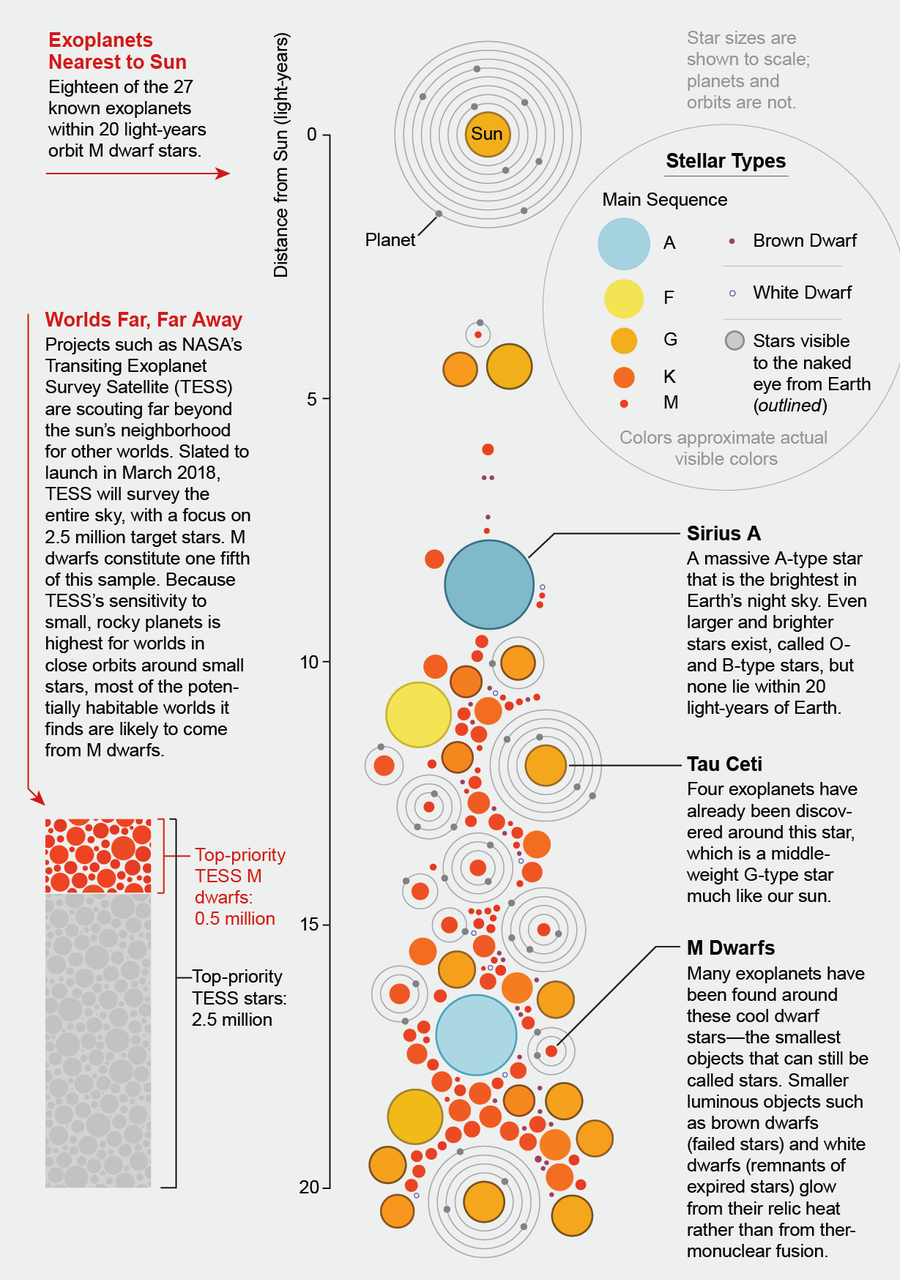This article was published in Scientific American’s former blog network and reflects the views of the author, not necessarily those of Scientific American
On supporting science journalism
If you're enjoying this article, consider supporting our award-winning journalism by subscribing. By purchasing a subscription you are helping to ensure the future of impactful stories about the discoveries and ideas shaping our world today.
This week, scientists using instruments at the European Southern Observatory’s La Silla facility in Chile reported finding an Earth-sized planet orbiting Ross 128, a red dwarf star residing a mere 11 light years from our solar system. What makes this discovery so exciting is that, unlike the case for other known Earth-like neighbors, the evidence for the new exoplanet’s surface temperatures and radiation environment suggest that the body could potentially support life.
This infographic by astronomer-turned-data-visualizer Nadieh Bremer shows how we look for exoplanets based on the stars they orbit, and highlights red dwarfs such as Ross 128 as the best contenders for hosting habitable planets. The graphic is featured in the December issue of Scientific American, along with some helpful background information from space and physics editor Lee Billings.

Credit: Nadieh Bremer; Sources: Jessie Christiansen and Eric Mamajek (consultants); NASA Exoplanet Archive and NASA Exoplanet Exploration Program (data)